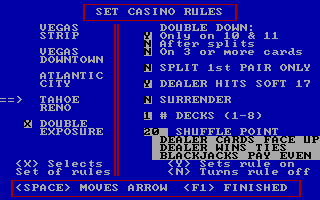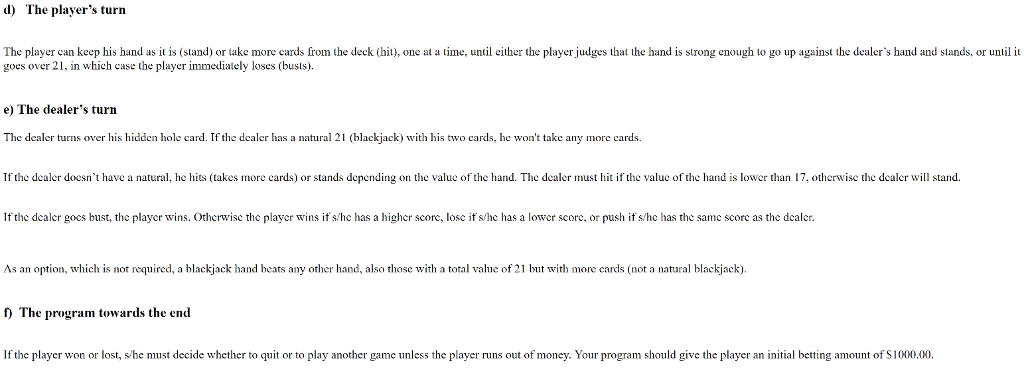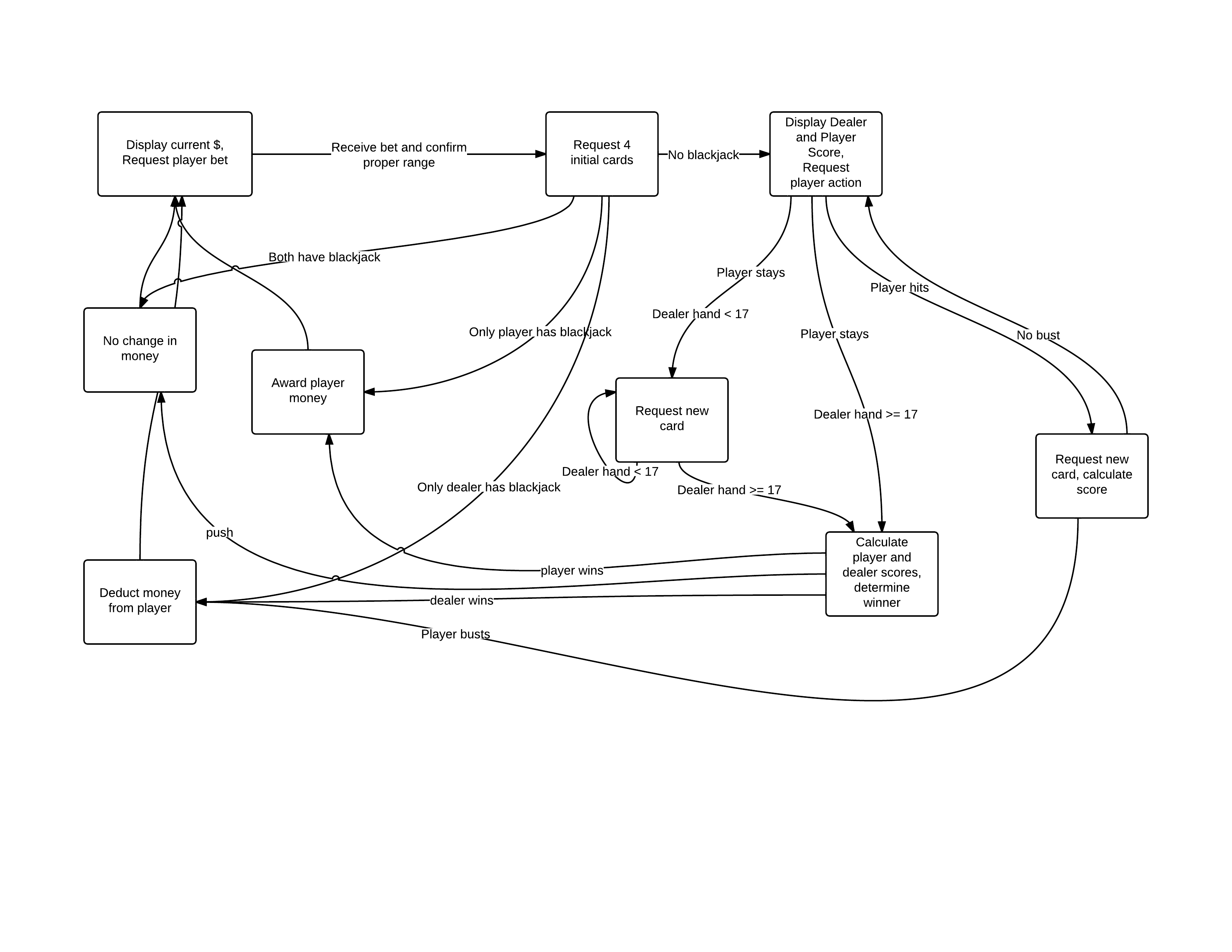How To Write A Blackjack Program In C
 Jun 5, 2014
Jun 5, 2014Write a program that scores a blackjack hand. In blackjack, a player receives from two to five cards. The cards 2 through 10 are scored as 2 through 10 points each. The face cards - jack, queen, and king are scored as 10 points. The goal is to come as close to a score of 21 as possible without going over 21. Hence, any score over 21 is called 'busted'. The ace can count as either 1 or 11, whichever is better for the user. For example, and ace and a 10 can be scored as either 11 or 21. Since 21 is a better score, this hand is scored as 21. An ace and two 8s can be scored as either 17 or 27. Since 27 is a 'busted' score, this hand is scored as 17.
The user is asked how many cards she or he has, and the user responds with one of the integers 2,3,4, or 5. The user is then asked for the card values. Card values are 2 through 10, jack, queen, king, and ace. A good way to hande input is to use the type char so that the card input 2, for example, is read as the character '2', rather than as the number 2. Input the values 2 through 9 as the characters '2' through '9'. Input the values 10, jack, queen, king, and ace as the characters 't', 'j', 'q', 'k', and 'a'. (Of course, the user does not type in the single quotes.) Be sure to allow upper - as well as lowercase letters as input.
After reading in the values, the program should convert them from character values to numeric card scores, taking special care for aces. The output is either a number between 2 and 21 (inclusive) or the word Busted. Use fucntions, multiway branches, switch statements or nested if-else statements. Your program should include a loop that lets the user repeat the calculation until they are done doing so.
The code runs properly for the first card but then it asks if the user wishes to repest the program. I need to claculate the value of all cards before it asks for that. Here is my code:
#include <iostream>
using namespace std;
int main()
{
[Code].....
The following tutorial is only some kind of “thought provoking” one: shows you some logic and class structure using enums and dynamically created images with Winform application.
Maybe I skipped some of the official rules. If so, I’m sorry I’m not a big gambler. This tutorial is not for teaching you Blackjack, but showing you some C# practices.
How To Write A Blackjack Program In Python

Here are some of the rules I have implemented:
- Write a program that scores a blackjack hand. In blackjack, a player receives from two to five cards. (The player decides how many, but that has no effect on this exercise.) The cards 2 through 10 are scored as 2 through 10 points each. The face cards, jack, queen, and king are scored as 10 points.
- Im tasked with developing a simple blackjack program for a class. The program I have currently compiles and runs but it isnt paying out properly. A blackjack (21) should pay out 1.5.the wager, but it is doing it more than it should. Here is the code I have.
Blackjack MATLAB Snapshot of Code Running My Project Snapshot of Code Final Analysis Almost the reverse of actual casino games, the odds are mostly in the player's favor. The code does indeed accomplish a simple, fairly easy game of Blackjack which is also quite fun. This lab requires you to design and implement a C program to simulate a game of Blackjack between two to four players. Your program must incorporate a two-dimensional array to represent the suit and the value of each card dealt Read More. A call to PInvoke function 'BlackJack!BlackJack.Sound::PlaySound' has unbalanced the stack. This is likely because the managed PInvoke signature does not match the unmanaged target signature. Check that the calling convention and parameters of the PInvoke signature match the target unmanaged signature.
- we have a shuffled deck of 52 cards
- the player starting hand has 2 cards
- the computer hand has also 2 cards: one of them is visible the other one is not
- the Jack, Queen and King has the value of 10
- the Ace has the value of 11 or 1 if 11 would be too much in hand
- the player starts to draw (official phrase is HIT)
- the main goal is to stop at 21 (or close to 21)
- the player can skip the drawing phase (STAY) if the total score is 16 at least
- if player stays, the computer turn comes
- first we can see the computer’s second (hidden) card
- the computer starts to draw using the same rules as ours mentioned before
To show you how to use System.Drawing.Graphics class, I create the images of the cards by cutting 1 big image into pieces. Click on the following image to download it:
I have 3 main classes: Card, Deck and Hand. Of course the form has its own Form1 class.
I also have 2 enums: CardValue and CardSuit. Both enum indexing starts from 1. The CardValue contains the type of the cards (Ace, King, 9, 7, 2, etc.). The CardSuit contains the colors (hearts, spades, etc.).
Create a new class: Card.cs
Under the class place the 2 enums:
The Card class will have 3 properties, 1 constructor, 1 new method and 1 overridden method. What properties does a card have? Of course its value, its color and its picture. So create the private properties with their public encapsulated fields. The Image property won’t have setter, the value and color setter will have the image loader method:

With the constructor let’s create a dummy card with no color and value:

The attached image has the following properties: it’s 392 pixel high and 950 wide. So 1 card is about 97 high and 73 wide. The method has to slice the image depending on the following color from the deck (one color in each row on the image) and depending on the value (the image has the values in ascending order).
How To Write A Blackjack Program In C Language

And the overridden ToString method, just for fun (not used later in the code):
How To Write A Blackjack Program In C Programming
In the next chapter I’ll show you how to create the class for the Hand and the Deck.